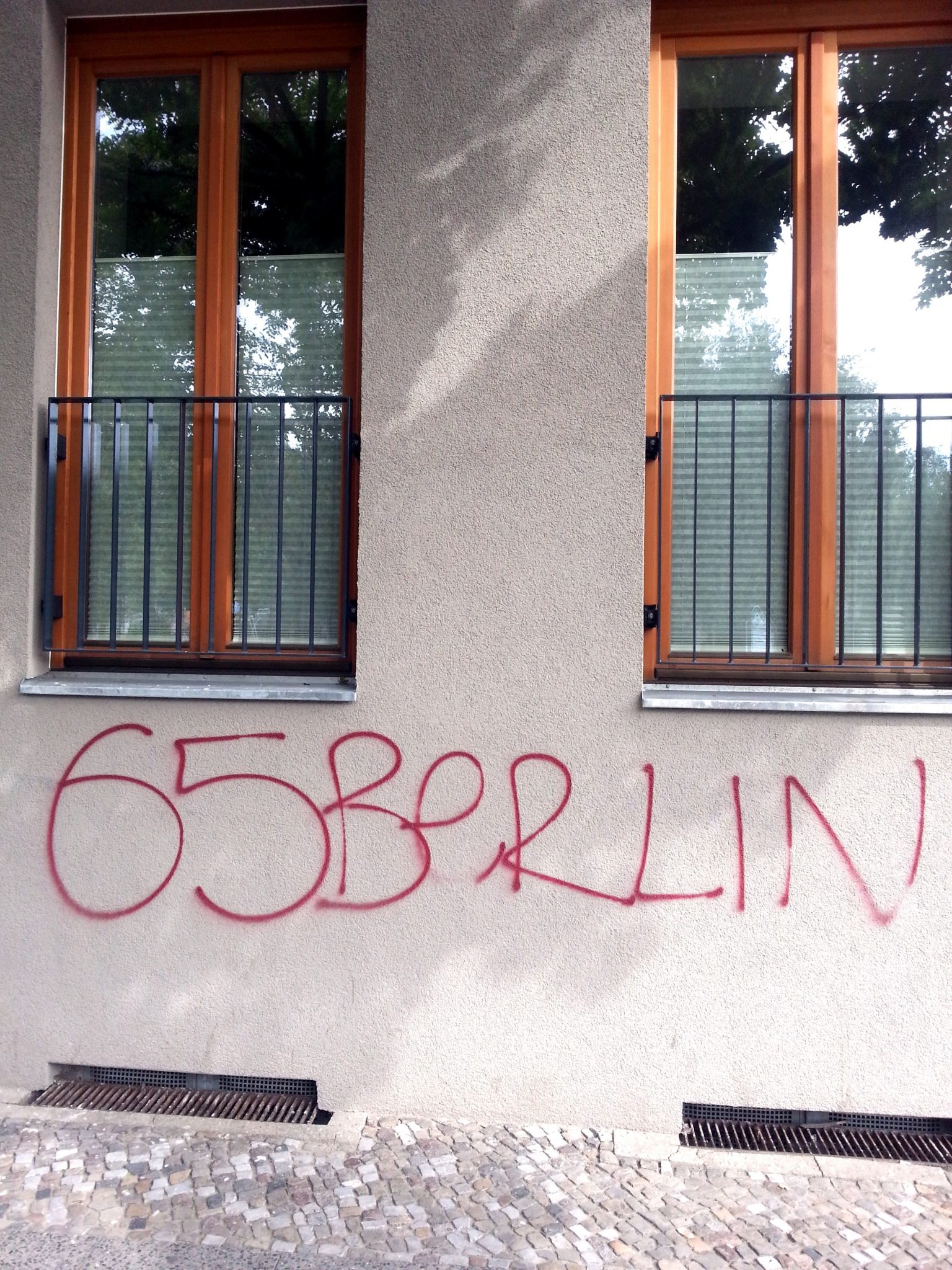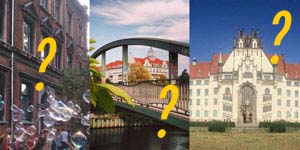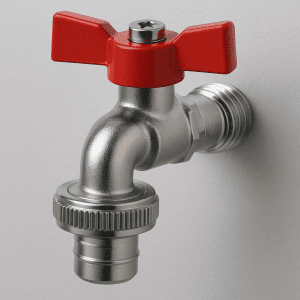The freshly renovated building at the bridge across Panke has already been marked by Wedding: “65 Wedding”, it says, like a reminder to the new tenants as to where they live now. Gerichtstraße is no fancy address, despite the nice old buildings – not yet…
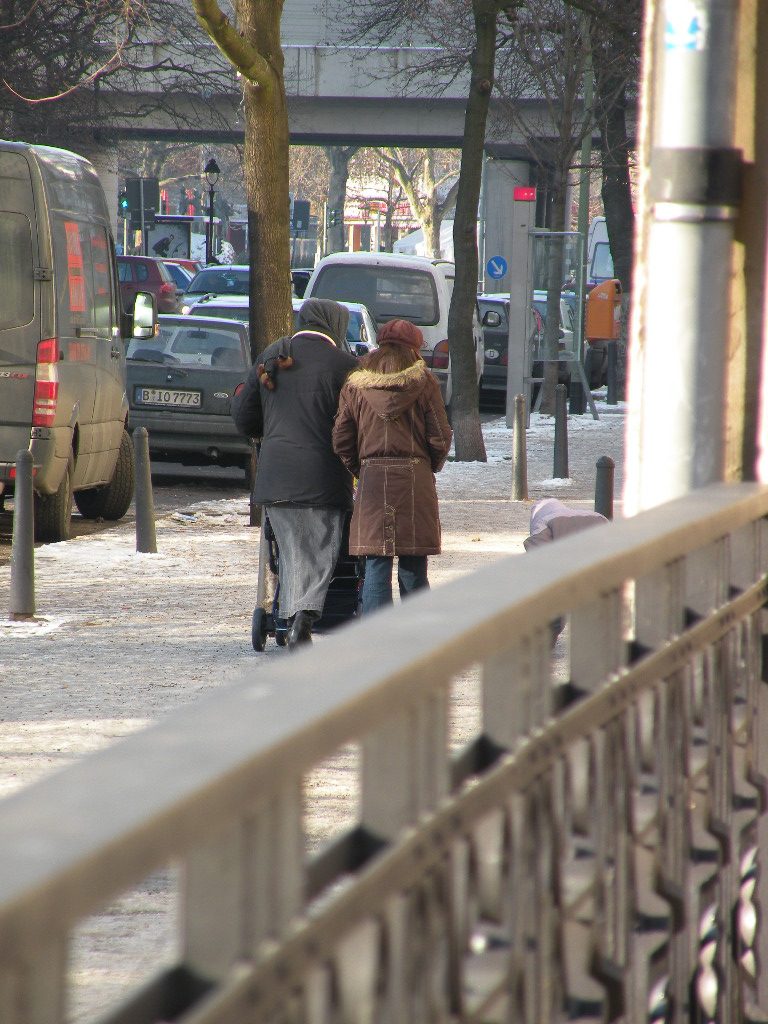 Jürgen Reichert’s has been at Gerichtstraße 12⁄13 for 30 years now. The 60-year old artist lived through the development of the Kiez and created it with his work. “If there are artists, the status of the Kiez gets adapted”, he says. The six courts dubbed “Gerichtshöfe” have been rented out to 70 artist by the GESOBAU since 1983 and are one of the biggest art quarters in Germany. However, the proximity to luxury housing projects at Chausseestraße, the new German secret service BND building, and to the development area at Heidestraße might become a problem. “Houses are being renovated, roof terraces built and tourist busses come along Gerichtstraße”, Jürgen explains, “There’s a new patronage here now…”
Jürgen Reichert’s has been at Gerichtstraße 12⁄13 for 30 years now. The 60-year old artist lived through the development of the Kiez and created it with his work. “If there are artists, the status of the Kiez gets adapted”, he says. The six courts dubbed “Gerichtshöfe” have been rented out to 70 artist by the GESOBAU since 1983 and are one of the biggest art quarters in Germany. However, the proximity to luxury housing projects at Chausseestraße, the new German secret service BND building, and to the development area at Heidestraße might become a problem. “Houses are being renovated, roof terraces built and tourist busses come along Gerichtstraße”, Jürgen explains, “There’s a new patronage here now…”
This is where the problem lies: People who can afford high housing prices often seek proximity to artists and have now discovered Gerichstraße.
“N 65’s″ home
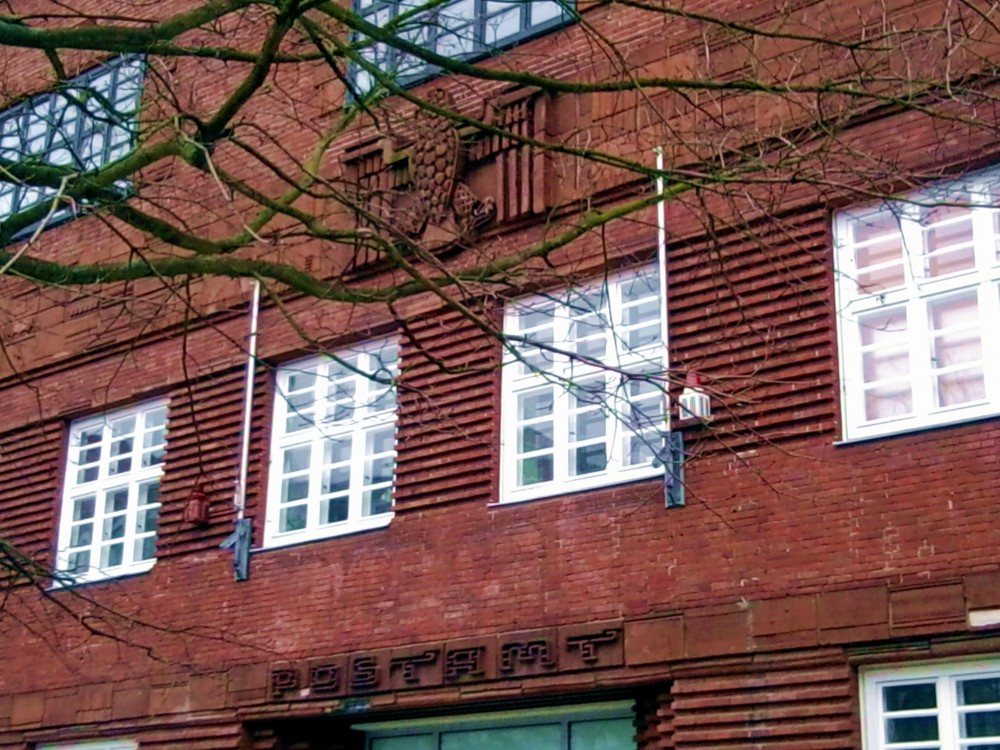 Today’s Gerichtstraße is still an experimental field with a lot of free rooms. The street has never been a good area, though. The name, for example, does not refer to a court house. Between 1749 and 1840, judgments were enforced at today’s Gartenplatz – using the gallows.
Today’s Gerichtstraße is still an experimental field with a lot of free rooms. The street has never been a good area, though. The name, for example, does not refer to a court house. Between 1749 and 1840, judgments were enforced at today’s Gartenplatz – using the gallows.
The western part of the street reaches up to Müllerstraße. Number 50⁄51, built 1926 to 1928 was the home of the local post “N 65”. Today this postal code, later “1000 Berlin 65”, still stands for Wedding identity.
These days this part of Gerichtstraße is a dead corner – opposite to the post the oldest communal cemetery in Berlin was located. The crematorium with its octagonal hall was sold to a private investor recently who uses it as a room for exhibitions. The macabre charm of the building might serve this new purpose. Only the future will tell how art gets along with the not very artsy Kiez, though.
A few meters to the east a bronze sculpture named “Tanz auf dem Vulcan”, or “Dance on the volcano” stands in the middle of Nettelbeckplatz. Poor, unpretentious but colourful – the surroundings are still typical “Wedding”.
Using old things in a new way
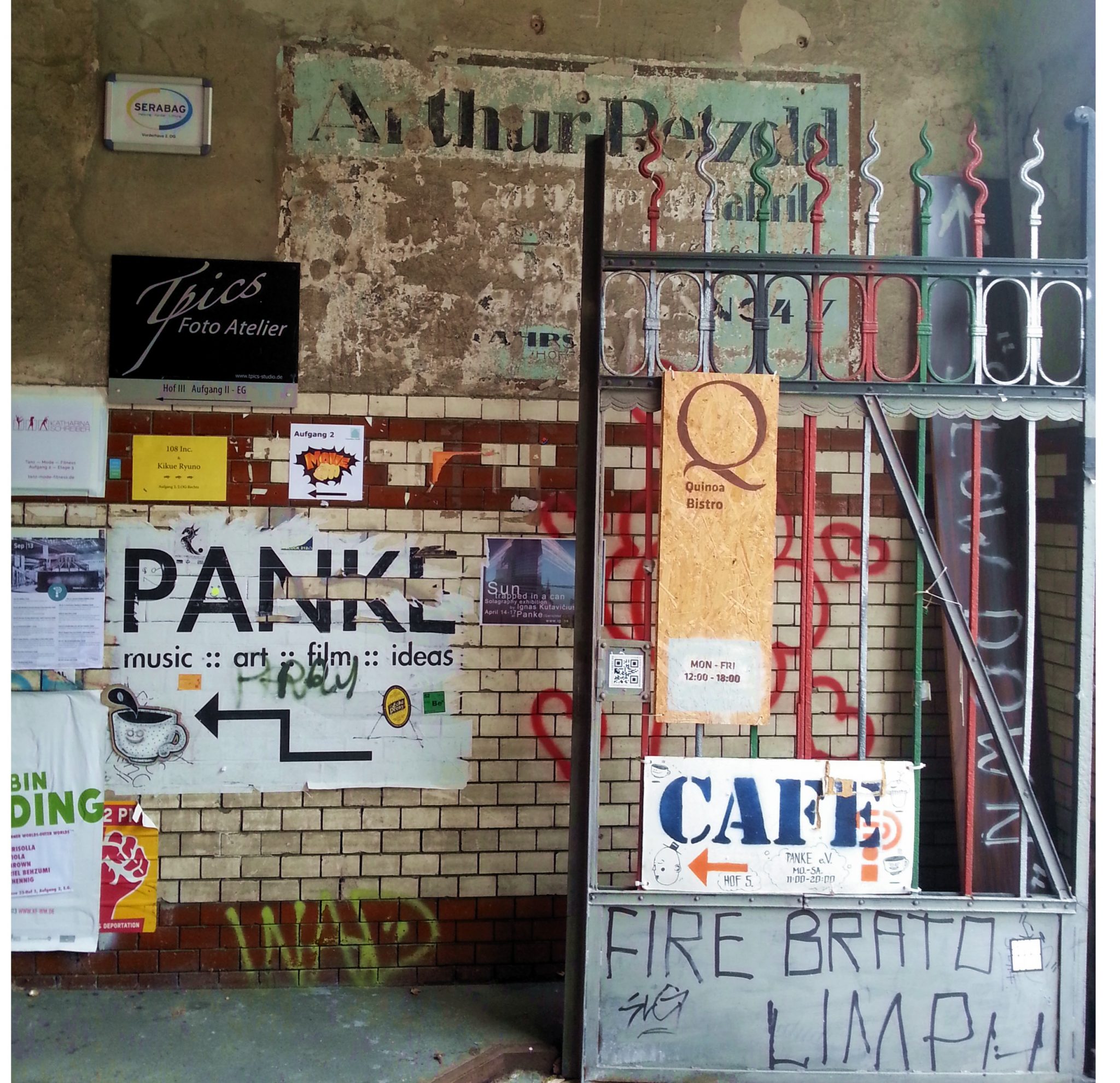 Gerichtstraße continues after an extremely ugly concrete rail bridge and changes: The eastern part of the street lies within the S‑Bahn ring and is much more dynamic. Here, you can find Gerichtstraße’s potential. The club “PANKE”, the art bar “Anita Berber” and the vegan bistro Quinoa, all located at Gerichtstraße 23, are part of a developing scene. The “Tangoloft”, also located there, has already existed longer.
Gerichtstraße continues after an extremely ugly concrete rail bridge and changes: The eastern part of the street lies within the S‑Bahn ring and is much more dynamic. Here, you can find Gerichtstraße’s potential. The club “PANKE”, the art bar “Anita Berber” and the vegan bistro Quinoa, all located at Gerichtstraße 23, are part of a developing scene. The “Tangoloft”, also located there, has already existed longer.
The Stadtbad, number 65, is now called “Stattbad” and serves as a creative hot-spot with a focus on street art and urban art.
Noisier than elsewhere
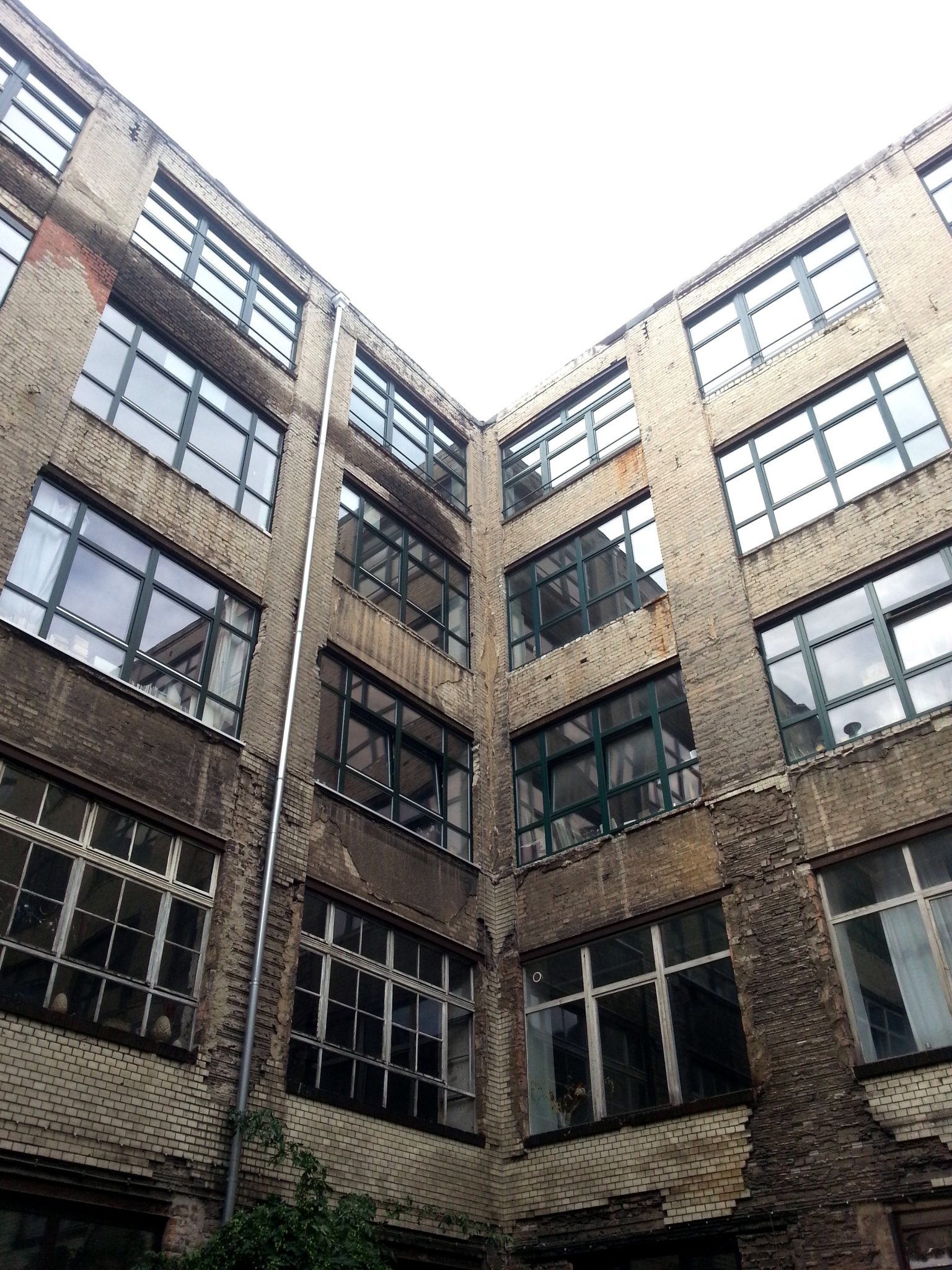 Your visit to Gerichtstraße could end at number 12⁄13, the Gerichtshöfe – past there nothing much happens. This part of the street has long been in the shadow of the wall, and the feeling of being in the outskirts is still there. Christine Kummer lived at Gerichtstraße until recently. “I could sense the positive development of the street, but it bothered me more and more as groups started to gang together”, the designer says. As a soon-to-be mum she didn’t feel safe anymore in an environment where rocker club raids are normal. “Conflicts are often carried out on the streets”, artist Jürgen Reichert says. He thinks that people here are more tolerant when it comes to an “intensive night life” than in Prenzlauer Berg. “Wedding should be able to stay colourful and lively, though”, he believes. “But one thing will happen for sure: Things are going to be more expensive.”
Your visit to Gerichtstraße could end at number 12⁄13, the Gerichtshöfe – past there nothing much happens. This part of the street has long been in the shadow of the wall, and the feeling of being in the outskirts is still there. Christine Kummer lived at Gerichtstraße until recently. “I could sense the positive development of the street, but it bothered me more and more as groups started to gang together”, the designer says. As a soon-to-be mum she didn’t feel safe anymore in an environment where rocker club raids are normal. “Conflicts are often carried out on the streets”, artist Jürgen Reichert says. He thinks that people here are more tolerant when it comes to an “intensive night life” than in Prenzlauer Berg. “Wedding should be able to stay colourful and lively, though”, he believes. “But one thing will happen for sure: Things are going to be more expensive.”
Gerichtstraße’s development will show how long “65 Berlin” will be able to keep today’s charm.
Translation: Daniela Hombach
More on Wedding’s English Language Facebook-Page “Der schöne Wedding”

